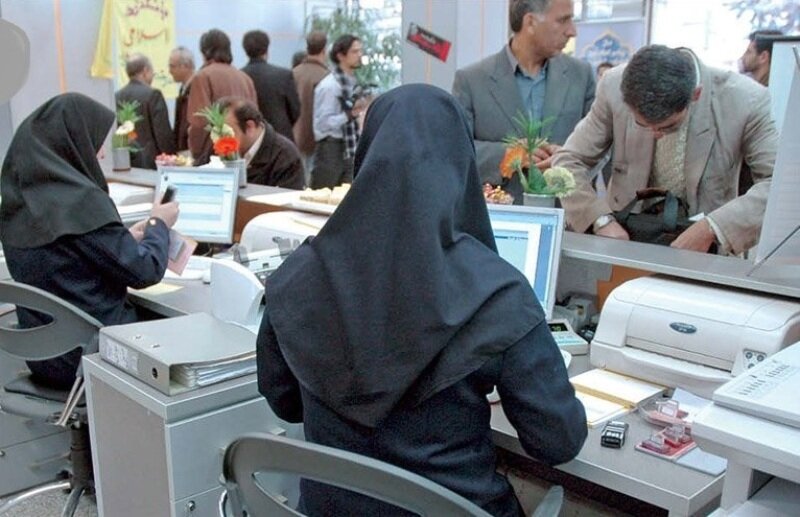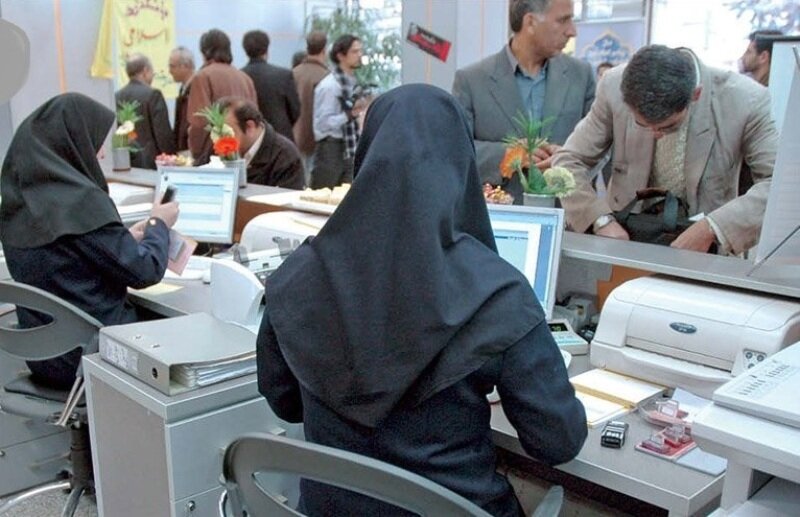
Group of Thought: Is it open to the way to eliminate gender discrimination when meritocracy is prevalent? The following is a summary Mariana Chadadoski Professor at the Faculty of State at Chile Catholic University Carmen Kesstani FarilProfessor of Public Management at the Mexico City Research and Education Center is in the following source:
Chudnovsky, Mariana, and Carmen E. Castañeda Farill. “Gender Discrimination and Merit‐Based Selection: A Case Study of Mexico.” Public Administration and Development 2.3 (1): 1-4.
The two authors, by studying a study in Mexico, show that meritocracy alone is not sufficient to eliminate gender discrimination. Despite the effort to hire merit, women continue to face vertical and horizontal discrimination in obtaining high management posts. The reasons for this discrimination reflect the gender patterns of the community in the criteria of evaluation and the more bold presence of men in decision -making committees. Therefore, to reduce discrimination, recruitment processes and evaluation criteria must be reviewed with gender sensitivity. The findings of the study show that despite the new rules and competitive tests, women are still facing a “glass ceiling” and face vertical and horizontal discrimination when they reach high management posts. This is due to the reflection of the gender patterns of the community in the criteria of evaluation and the less presence of women in the interview committees. Although women make up a significant portion of the Mexican government’s workforce, they are less involved in high -level management positions. This study shows that this condition is due to gender discrimination that occurs at two vertical (occupational hierarchy) and horizontal (credibility and job power). The authors believe that the seemingly neutral criteria of meritocracy in practice reproduce the gender bias of society. This proves that merely implementing meritocracy systems, regardless of the cultural and social roots of discrimination, cannot lead to gender equality. College Published, below:
****
«There is no reason to pay attention to gender or ethnicity for hiring people … The criterion for hiring managers must be their deserving … people are worthy of being spontaneous!You probably have heard similar to such arguments, which are usually opposed to suggestions that believe in the election of managers and the appointment of officials to criteria such as gender or belonging to racial, ethnic, and belief groups.
But does the selection of managers really reduce gender discrimination in government agencies? Will the mere reliance on meritocracy lead to the promotion of women in management? With theoretical speculations and hypotheses, this question cannot be answered, you have to go into data and examine real experiences. This is what Mariana Chadadovski, a professor at the Faculty of State at the Catholic University of Chile and Carmen Kesstaa Faril, a professor of public management in Mexico, is conducting a joint research on Mexico. They show that women are faced with serious gender discrimination for high management posts in the government, and that it is not sufficient to rely on meritocracy and selection based on the abilities and competence to eliminate this important discrimination, especially in environments that have traditionally been mastery of men.
Women in Latin America have been confronted with gender discrimination for many years. While women hold 5 % of the total government jobs in the Latin American region, on average only 5 % of the high -profile and management posts have obtained. In year 2, women were leading only 5 % of ministries. While Latin American countries have made important efforts to professionally promoted government services over the past two decades, and promoting competence criteria for entering high levels of management has been one of the main strategies of countries, including Mexico. Despite the promotion of meritocracy, researchers believe that “these efforts have ignored the gender consequences of competence -based competition.”
Meritocracy in the Mexican administrative system
The reform of the administrative system in Mexico and other Latin American countries is based on “web” insights in which the selection of staff and managers is based on the merit. The Web model is seeking a system that prevents political interventions as well as supporting, comradeship, and proper granting to family members and dependents in government bureaucracy. The Web approach is a very strict and strict view of the government in which the roles and duties of the administrative apparatus of the government are carefully separated and, by formulating formal bylaws and regulations, impersonal authority dominates the administrative system.
Mexico implemented a new process for the professionalization of the administrative apparatus and the selection of government employees based on meritocracy, known as the Servicio Professional De Carrera or SPC. The system, with the exception of basic employees and high -level political officials, is applied to all professional and managerial posts. The “Selection and Professionalization” committee based in the Secret Ministry (Secretaría de la función Pública) oversees the implementation of this system in all other ministries and institutions of the federal government.
Competitive tests are held for all suitable government, tests designed based on the best international experiences. The system has been asked to only be able to appoint an individual to managing without participating in the competitive recruitment process. More than 6,000 administrative job opportunities have been publicly announced by the Mexican government from 1 to 5 years and invited individuals to take the test.
The registration process has five steps to hire. In the first step, applicants submit their documents (including professional records) through an online system. In their information system, their information system becomes an anonymous number so that one will probably not attract special attention to the reputation of the name and relationships. The system then separates the group on the basis of basic and defined criteria. Then, a committee consisting of specialists in a particular field or career profession designs and points to a managerial evaluation system based on managerial capabilities as well as work specialties. In the fourth stage, the few people included in the final list will be interviewed. Finally, a committee consisting of three government employees performs the final evaluation and chooses the final name for the specific position.
The persistence of gender discrimination
In year 2, the Federal government of Mexico had more than 6,000 employees, of which 5 % were women. As a rule, there should be no gender discrimination despite the meritocratic recruitment system and competitive tests. Do the data confirm such assumption? Childnovsky and Kasistani are collecting two very large data collections: one personnel and employees of the Mexican ministry, which comprises more than 6,000 jobs, and the other data from all advertisements and recruitment tests of these ministries, including more than 6,000 exams.
The results showed that women had two types of gender discrimination. Vertical gender discrimination and horizontal gender discrimination. Vertical discrimination is that jobs at high levels or levels of administrative hierarchy are more occupied by people who belong to race, gender, ethnicity, or group. Horizontal discrimination occurs when they are at the same level or category in terms of administrative hierarchy, but for a higher credibility and prestige or power and even more penetration or even more salaries, usually those who belong to a particular group. For example, in terms of administrative hierarchy, the ministry’s director of the economy or foreign is at the same time as the director of the ministry such as culture or education, but the director general of the Director General in the Ministries of Economy or Foreignity is far greater.
Although women make up a little more than half (2 %) of the Mexican government’s workforce, the presence of less (about 2 %) was about 2 high -level management positions. The findings of the study indicate that both vertical and horizontal discrimination in Mexico after the use of meritocratic recruitment system. In the administrative hierarchy, as we move to higher ranks, fewer women are in management posts, and women are more commonly used in jobs such as secretary or less credible jobs. Women accounted for 2 % of general managers, 2 % of general managers, and 2 % of regional managers. The study of the data was also shown in horizontal discrimination: Women in areas that are traditionally considered male in Mexico and have more prestige and job power had a much less chance to be selected for excellent positions; Areas such as defense and national security, agriculture, communications, transportation, interior, economics, foreign affairs, labor and even the presidential office.
Why has gender discrimination still exist after the implementation of the administrative and recruitment policies based on competing competitive tests? According to the researchers, the meritocracy strategy has not taken place for the professionalization of government agencies in a vacuum, but has been implemented in organizations and offices that have previously been gender discrimination.
Even when the administrative systems are based on meritocracy and the selection of individuals to achieve a management category in a competitive environment based on competencies, gender discrimination still dominates. Explaining this situation, the authors state, “When we examined the steps and content of the recruitment tests, we found out that these tests were ignoring the subject of gender.” Men’s top management has been traditionally owned, so it is much more likely to be men’s selection and interview committees, and it is the men who evaluate female candidates.
Childnovsky and Kesstaniya explain that the criteria that are embedded to evaluate the competencies reflect gender patterns in society; As a result, in a society where the gender pattern leads to the formation and continuity of gender discrimination, the same conditions are repeated in the criteria and process of recruitment tests.
One of the most important examples is the amount of time the volunteer of a specific job can devote to that job, or the leadership styles and negotiations. These important cases are different between men and women because society and the social relationships of society have defined Muslim patterns for men and women, and the same patterns are reflected in employment tests and parameters, leading to gender discrimination. The authors point out that the “glass ceiling” metaphor correctly applies to Mexican women, they seem to compete in a meritocracy system, but deal with invisible criteria and criteria to achieve high levels of administrative system.
A woman does not necessarily open the way!
The credibility and prestige of a job or administrative office is another issue that needs to be addressed in the discussion of gender discrimination. Because jobs are divided into high, medium or low prestige groups. Various studies have shown that prestige is evaluated based on the attention of the media, the field of activity, and its authority. Existing literature shows that there are fewer women in prestigious and prestigious areas such as defense, security, finance and foreign affairs, and traditionally women in areas such as education and health, which are considered average, have a higher chance of taking higher positions.
One of the remarkable findings of the authors’ research is the impact of the presence of one or more women in the top management on the body’s body. It is usually assumed that when a woman is in the highest level of organizational management, it is possible to increase the share of women in that office. Such assumption is based on a theory called “top-down” and there is evidence in its confirmation. But that doesn’t necessarily happen.
Childnovski and Kasaniyda’s research shows that in Mexico the presence of more women in the general manager’s positions has not necessarily led to the presence of more women as the deputy director or manager. For example, when the Minister of Labor of Mexico was a woman was one of the lowest (2 %) figures compared to other government agencies. The Ministry of Labor is traditionally considered a masculine area, so simply assigning a woman to the ministry has not reduced the gender bias of the ministry. According to this evidence, the analysis of women’s performance in recruitment and selective tests is crucial to discover and identify the relationship between competition based on competence and gender discrimination.
What can be done to reduce gender discrimination in the administrative system?
The analysis of the Mexican state conditions gives insights on the importance of modification of the steps, criteria for evaluating competencies and the content of recruitment tests to reduce gender discrimination. The composition of the interview committee and even the interview criteria are determined by the upstream authority, which are probably often male based on data on vertical discrimination and existing qualitative analysis. Another point is how to define and prioritize the criteria for evaluating competence. These criteria may seem to be biased and neutral, but in practice they can reflect the sometimes subconscious orientation of gender.
Researchers thus conclude that in order to reduce and eliminate gender discrimination in the employment and appointment of managers, one cannot only rely on a meritorious system based on a seemingly equal and free -run system. In environments and communities that have been traditionally owned by men, one must consciously pay attention to bias and ideas that may abandon gender and other minority groups, and by monitoring data and system performance, ways to correct.
1
منبع: www.khabaronline.ir




